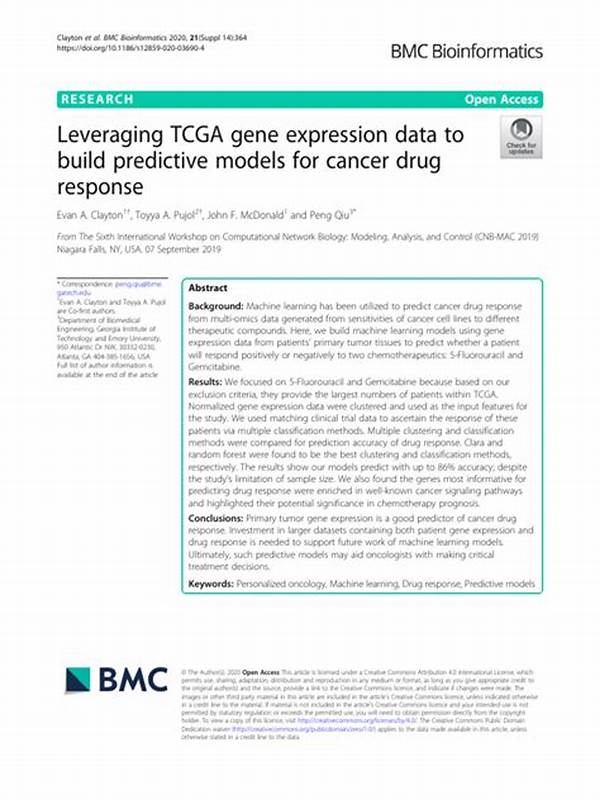Hey there, fellow data enthusiasts! If you’re diving into the world of data science, you’ve probably heard the term “cross-validation” thrown around quite a bit. It’s one of those nifty techniques that can make your predictive models shine. But what exactly is it? And how can you use it to boost the accuracy of your predictions? Today, we’re going to unravel the magic of leveraging cross-validation for predictive enhancement.
Understanding Cross-Validation Basics
Okay, so here’s the scoop: cross-validation is a technique used to assess how the results of a statistical analysis will generalize to an independent dataset. Essentially, we split our data into chunks or ‘folds’, and train our model on some of them while testing on the others. This method gives us a better understanding of how our model will perform on unseen data.
Leveraging cross-validation for predictive enhancement isn’t just about gauging performance. It’s about optimizing it. When you use cross-validation, you ensure that your model is robust and reliable. By repeatedly training and testing, you mitigate the risk of overfitting—where your model learns the training data too well and performs poorly on new, unseen datasets. This ensures smoother predictions and better generalizations, making cross-validation a must-try technique for budding data scientists eager to refine their models.
Key Benefits of Cross-Validation
1. Richer Dataset Insights: Leveraging cross-validation for predictive enhancement reveals deeper insights into your data, helping you understand its complexity.
2. Improved Model Stability: By reducing overfitting, your models become more stable and perform consistently across different datasets.
3. Reliable Performance Metrics: Cross-validation provides a more accurate estimate of your model’s performance, ensuring the metrics you rely on are trustworthy.
4. Informed Hyperparameter Tuning: Adjust your model’s parameters with confidence, knowing they’re being optimized through a robust validation framework.
5. Adaptable to Various Models: No matter the algorithm, leveraging cross-validation for predictive enhancement can provide valuable feedback and guidance.
Cross-Validation Techniques to Experiment With
When it comes to leveraging cross-validation for predictive enhancement, you’ve got options—lots of them! One of the most popular methods is k-fold cross-validation. It’s like dividing your dataset into k smaller sets, or ‘folds’, and then training and testing your model k times. Each fold gets its turn as the test set once, while the remaining k-1 folds serve as training data.
Then there’s stratified k-fold cross-validation, which ensures each fold is representative of the broader dataset by maintaining the distribution of target classes. And if you’re dealing with time-series data, there’s time-series cross-validation, which respects the sequential nature of data and tests your model’s ability to predict future values based on past information. By experimenting with these techniques, you grasp the full potential of leveraging cross-validation for predictive enhancement.
Practical Tips for Cross-Validation
1. Start Simple: If you’re new to leveraging cross-validation for predictive enhancement, begin with basic techniques like k-fold.
2. Consider Data Type: Choose your cross-validation method based on the nature of your data, especially with time-series data.
3. Combine with Grid Search: Maximize predictive performance by combining cross-validation with grid search for hyperparameter tuning.
4. Mind the Computational Cost: Be aware that cross-validation can be computationally intensive but the rewards are worth it.
5. Keep Experimenting: Always be exploring different strategies and combinations for the best results.
6. Use Libraries: Libraries like scikit-learn make cross-validation a breeze, offering ready-to-use implementations.
7. Regularly Update Models: Leverage cross-validation to keep your models fresh and relevant as new data comes in.
8. Inter-compare Models: Use cross-validation to benchmark different models against each other for better decision-making.
9. Understand Limitations: Recognize cross-validation’s limits, such as higher computation costs with large datasets.
10. Continuously Learn: As techniques evolve, staying updated amplifies the benefits of leveraging cross-validation for predictive enhancement.
The Downside of Cross-Validation
Now, let’s not get too carried away. While leveraging cross-validation for predictive enhancement sounds like the ultimate solution, it does have its downsides. First off, it’s computationally intensive. Performing multiple rounds of training and testing can drain resources, especially with large datasets. Plus, working with big data means longer wait times, and who has the patience for that?
Moreover, different cross-validation techniques suit different types of problems, so relying on the wrong one can lead to incorrect inferences. It’s crucial to understand your dataset and problem to select the right cross-validation technique. Lastly, while cross-validation gives a good estimation of performance, it won’t account for every real-world scenario, especially if your data isn’t representative of expected conditions. So, always combine cross-validation with domain knowledge and expertise for the best outcomes.
Wrapping Up Cross-Validation
In short, leveraging cross-validation for predictive enhancement is like having a trusty sidekick when forging powerful predictive models. By understanding the ins and outs of different cross-validation techniques, you can craft models that generalize better and adapt to diverse datasets.
The art of fine-tuning your models is like hacking a video game—enjoy work, experiment, and you’ll reap the rewards eventually. But don’t forget—cross-validation is not a standalone solution. Combine it with domain knowledge, intuition, and a sprinkle of curiosity, and you’ll be well on your way to crafting models that amaze and adapt!
Final Thoughts on Cross-Validation
Leveraging cross-validation for predictive enhancement should be a staple in every data scientist’s toolkit. It challenges conventional wisdom, offering deep insights into how your models perform outside the lab. While it’s not the silver bullet and demands consideration of computational resources and technique appropriateness, the value it adds is unquestionable.
Incorporating cross-validation into your modeling routine ensures you’re crafting models that are not only precise but also adaptable to the unpredictable nature of real-world data. So go ahead, dive into this world, embrace its challenges, and watch your models transform into powerful predictive forces. Happy cross-validating!

